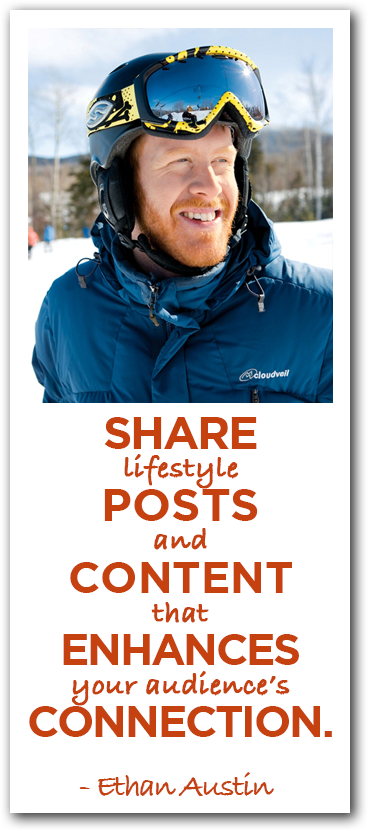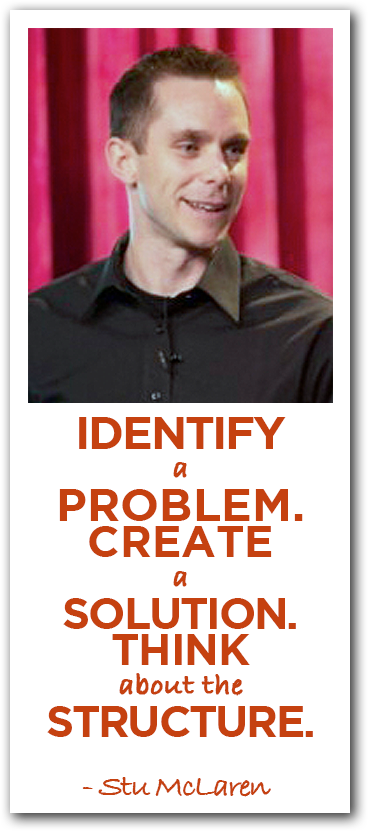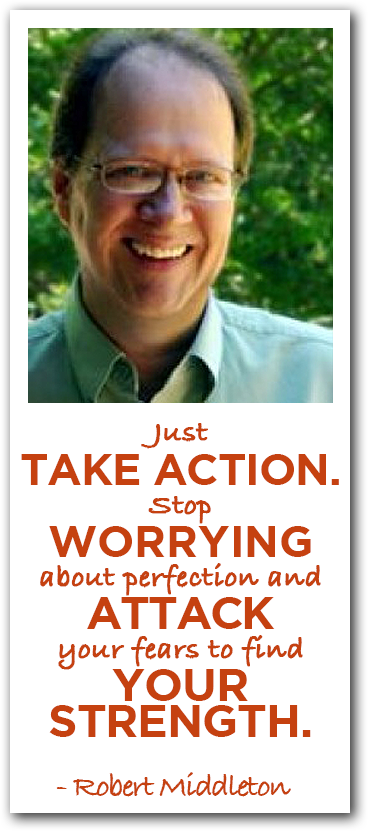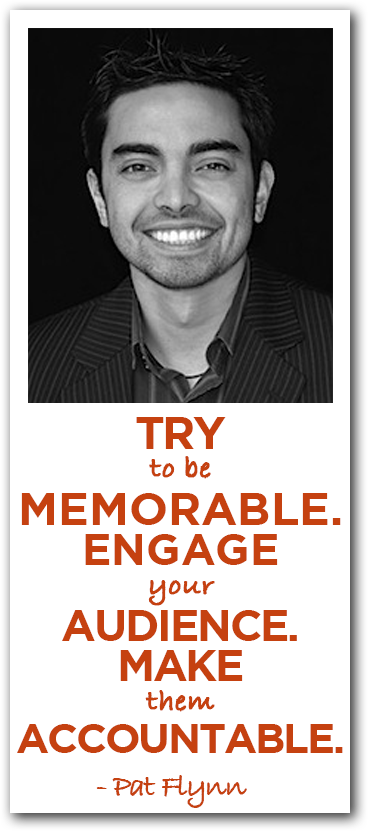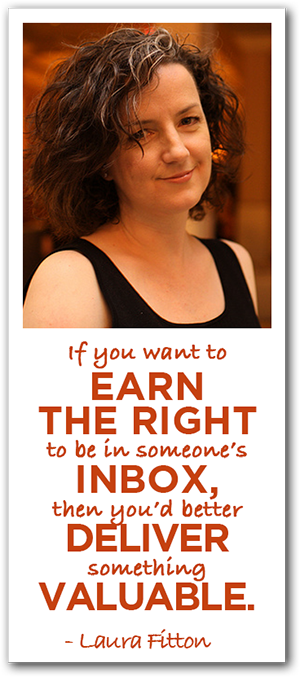 A lot of small businesses haven’t used social media as a tool for inbound marketing. Do you know the steps and tools to use to deliver specific relevant content to your customers?
A lot of small businesses haven’t used social media as a tool for inbound marketing. Do you know the steps and tools to use to deliver specific relevant content to your customers?
Do you know how to best use Twitter to help your business grow?
If you don’t, you’re not alone. Many small businesses don’t know how to hone their social media platforms to focus on what matters to their business. That’s why we asked Laura Fitton, inbound marketing evangelist at HubSpot to show us how, in this week’s episode of The Marketing Agents Podcast.
Podcast: Play in new window | Download
Subscribe: RSS
Big Ideas:
- How does one become a “marketing evangelist?”
- It involves a lot of public speaking and tons of communication.
- Make sure that you’re listening to marketing influencers and giving their work attention and telling them work we’ve done (when appropriate).
- I’m paid to be nice to people I already like!
- How did you end up at HubSpot and how did social media play a part?
- I used to be a speaker coach and was blogging about it.
- It led me to Twitter and to create Pistachio Consulting and then the idea for One Forty came along.
- It made sense for my company to look for a bigger entity to support us.
- I reached out to Brian and next thing we know it was a beautiful marriage.
- Do you think it was a good or bad move for Twitter to limit its tool and app ecosystem?
- I think it was a bad move because there’s great potential for revenue from the Twitter data stream.
- They are getting 15% of their revenue from the few licensed third-party companies.
- An app store would help market incentives and monetize that data stream.
- A platform is a tough business strategy to execute because you have to try to keep everyone happy and protected .
- What are some of the biggest reasons people are telling you why they’re not embracing social media?
- The resistance to inbound marketing is usually – “I haven’t heard about it yet, I don’t quite understand it, I wonder if it’s like content marketing, what is it?”
- Social media offers the chance for a company to throw a lot of material out there for a prospective audience.
- How do I attract the right group of people that are likely to convert?
- Building community is key – attracting the right people to take action.
- The inbound marketing philosophy is to earn your audience by generally being of value.
- The company that’s using inbound (marketing, recruiting, training, or whatever) – the inboundy way is to say – “what can I do that is of use, of service, that is helpful to the people I want to attract.”
- These people can be your buyers or the people close to them.
- All our marketing is focused on “what can we do to be useful to the marketer?” and how to add value by using blogs, emails, lists, etc.
- What can you offer without being pushy. Make it about your reader or buyer.
If you want to earn your right to be in someone’s inbox, you’d better be delivering something valuable to them.
- Do you have different definitions for inbound marketing, content marketing and social media marketing?
- Inbound marketing is the car and the content is the fuel.
- Inbound marketing is a set of practices and attitude that help your marketing. It can involve emails, landing pages, content in that offer or blog – without it it’s useless.
- Inbound is all the steps and practices that you use to attract, convert, and delight once they become customers.
- Social media marketing is an important tool for content marketing and inbound marketing.
- Is Twitter still your favorite platform?
- Oooh…no! I answer that question differently now though.
- It’s my favorite platform for doing x, y, and z…
- I love using Path for being brutally honest with a core group of friends.
- Twitter is still my favorite platform for seeing if I have a contact, or for seeing someone I know who knows a prospect to get leads from.
- I use LinkedIn and Facebook for a specific set of things.
- When people say “I don’t get Twitter” then it may mean they just don’t get it, or don’t have a specific use for it yet.
- Although businesses “get” Facebook, a lot don’t “get” Twitter. How do you explain it to them?
- I try to ask them questions about their business and what their needs and we look at some examples of people in their industry.
- Maybe we talk about the types of people they want to build relationships with them.
- Maybe they’ve already been doing some inbound marketing and want somewhere where they can get their content found.
- In August 2007, I had emailed my blog post to Guy Kawasaki about Twitter and he replied back. I told him he could do efficient rumor hunting on Twitter much quicker than RSS. He was blown away.
- It’s stupid to be insulting to someone and say “you’re just dumb, and you don’t get Twitter.”
- If you just jump onto Twitter without knowing who you need to find or what you need, then you won’t get it.
- It’s like changing the channel on the radio. Keeping tuning until you find what you like.
It’s important to interact with people on a low-key business basis way because it builds trust.
- Using our social media software from HubSpot I was able to watch tweets from a talk and could tell who were leads, which were customers attending, I could selectively retweet customers that gives me a chance to see when leads are tweeting and helps us follow up with them.
- Using those tools is pretty darn practical. We can see specific segments of new customers or revenue that come in from Twitter.
- Is the future of social media for small businesses going to be the “pay-to-play” strategy using ad platforms?
- Yes, definitely. People will tag other things and we aggregate those as well.
- Yes, it can be a part of the mix, but the inbound philosophy is to offer high quality content to your niche of users.
- Using a search strategy, or a social media strategy, it can be about liking, sharing, and interactive content.
- You can do social media marketing in a really annoying outboundy way or a likable, shareable inboundy way.
- It’s like a soap opera. I’m paying to put on this show to sell my product. But I need to make it a good show or I won’t sell my product.
- There are certain brands that I love so much that I love sharing their product.
- Brands can respond to your customer tweets or feedback quickly via Twitter or social media.
A lot of times we forget that the client relationship is very important to ongoing and future business. When you can’t cement your bonds in real life, then what are you doing for your clients on social media?
It’s much better to be that guy who tells you “you have spinach in your teeth.” You want your customers to be comfortable with coming to you. You really should be doing everything you can to delight your customers. The delighted customers are the long-term insurance for your business growth.
Relationships do have ROI.
Juicy Links:
- Follow Laura Fitton on Twitter.
- Check out Laura Fitton on HubSpot.
- Connect with Laura Fitton on LinkedIn.
- Like Laura Fitton on Facebook.
- Check out Twitter for Dummies on Amazon.
- Register for the free Blogging Webinar from flyte
- And be sure to leave a review for The Marketing Agents on iTunes!
